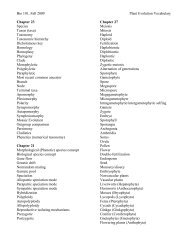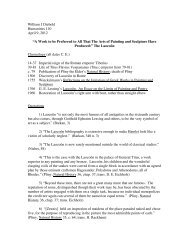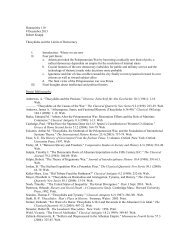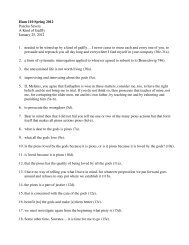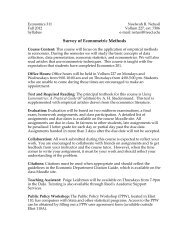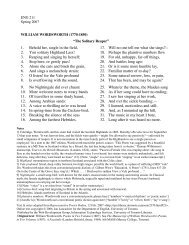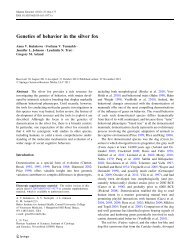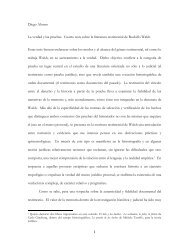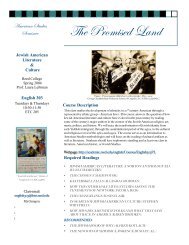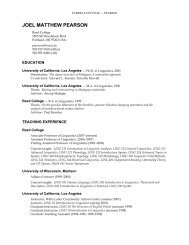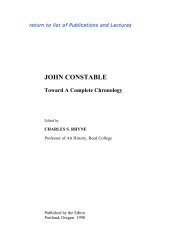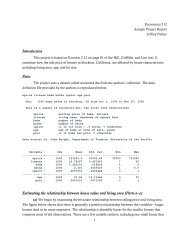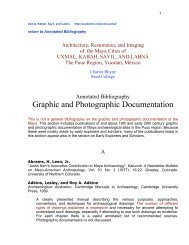REED COLLEGE SCIENCE OUTREACH PROPERTIES OF MATTER
REED COLLEGE SCIENCE OUTREACH PROPERTIES OF MATTER
REED COLLEGE SCIENCE OUTREACH PROPERTIES OF MATTER
You also want an ePaper? Increase the reach of your titles
YUMPU automatically turns print PDFs into web optimized ePapers that Google loves.
10<br />
Lesson Two- What is Matter?<br />
Objectives<br />
o Students will learn that matter is made up of atoms & molecules.<br />
o Students will learn that there are many kinds of atoms that give matter its<br />
unique properties.<br />
o Students will learn that atoms can form bonds with other atoms to form<br />
molecules with new properties.<br />
Lesson Background— Atoms and Molecules<br />
So far students have learned that the world is made up of matter and that different types<br />
of matter that have different properties. Today students will learn that matter is made<br />
up of atoms and molecules.<br />
Matter is made up of tiny atoms that are too small for us to see even with an optical<br />
microscope (although there are electron microscopes that allow us to see them). Atoms<br />
are measured in Angstroms, which are 1/10,000,000,000 of a meter (very, very small).<br />
There are many types of atoms, each with their own properties, which is why there are<br />
so many types of matter. Each different type of atom is called an element. Right now<br />
scientists have discovered 118 different types of elements (and they continue to discover<br />
new ones). Scientists have made a chart of the elements called the periodic table of<br />
elements.<br />
This table contains important information about the atoms. Even though atoms are very<br />
small, they are made up of even smaller parts. Atoms consist of a nucleus, which is<br />
made up of tiny little particles called protons and neutrons. Protons are very<br />
important. Some atoms have many protons and others only have a few. Each element<br />
has a specific number of protons and they help to determine the element’s unique



